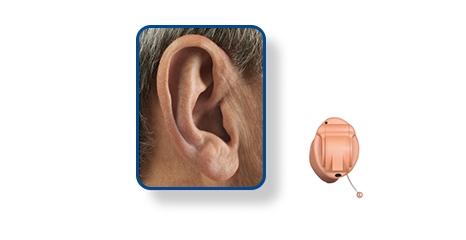
Invisible In-The-Canal (IIC)
The smallest custom style, IIC instruments site invisibly in or past the second bend of the ear canal. IIC are specifically designed for mild to moderate hearing loss.
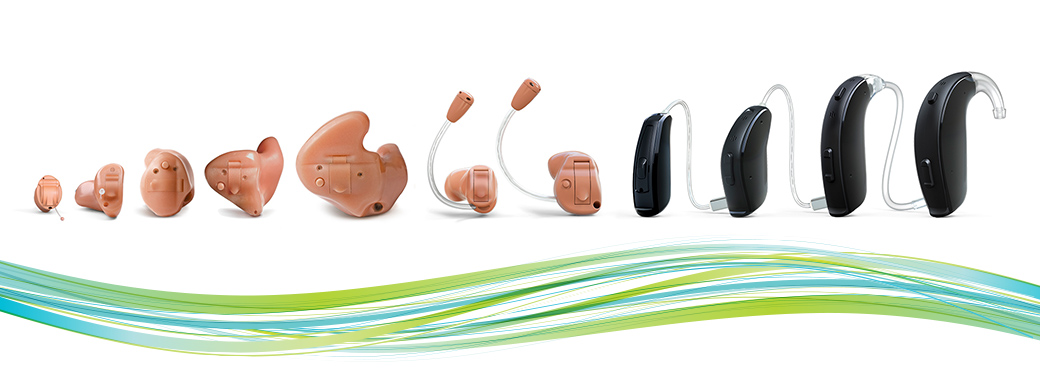

The smallest custom style, IIC instruments site invisibly in or past the second bend of the ear canal. IIC are specifically designed for mild to moderate hearing loss.
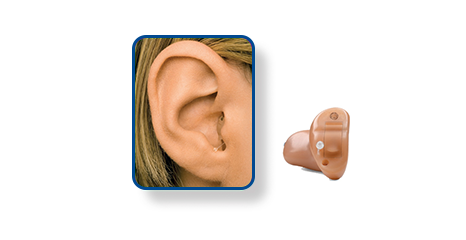
The smallest custom style, CIC instruments fit deeply and entirely within the ear canal. They fit mild to moderate hearing losses and offer high cosmetic appeal as they’re nearly invisible when worn.
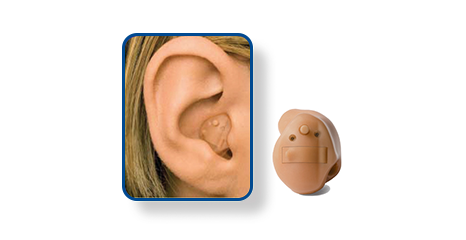
ITC instruments sit in the lower portion of the outer ear bowl, making them comfortable and easy to use. Because they’re slightly larger than CIC models, they have a longer battery life, and can host additional features such as directional microphones for better understanding in noisy environments, and controls such as volume controls. They fit mild and moderate hearing losses.
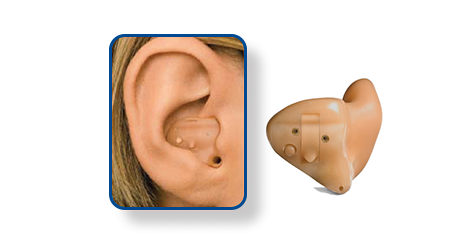
Half shell models fill half the bowl of the outer ear. Like ITC models, their size enables the addition of features such as directional microphones, volume controls and push buttons to activate special settings for different listening environments. Because of their size, they may be easier than smaller models to handle for some people and yet are still often disguised by hairstyles or sideburns. This hearing aid style looks similar to the ITC hearing aid when worn on the ear, but is slightly larger.
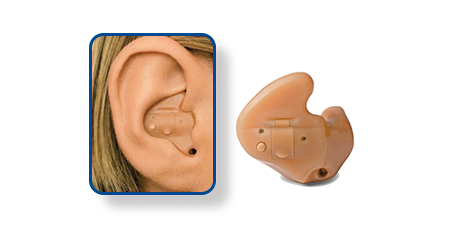
Full shell models sit flush within the outer ear bowl. Their size allows the maximum number of additional controls and features such as directional microphones, which require space on the outer portion of the instrument. They use a larger battery size than the smaller styles, and can fit a larger receiver with enough power for even some severe hearing losses. Because of their flexibility, they’re widely recommended for mild to severe hearing loss.
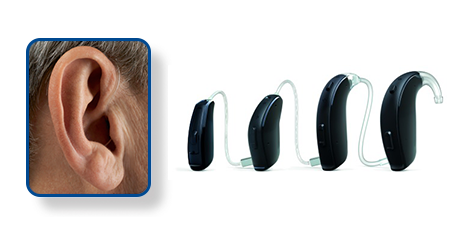
Behind-the-Ear (BTE) models sit behind or on top of the outer ear, with tubing that routes sounds down into the ear that connects to an ear tip or earmold to secure them in the ear canal. BTEs come in colors to blend with hair or skin tones, and even chrome colors, leopard print and other funky designs to suit personal styles. Different BTE sizes accommodate different features, controls, battery types and degrees of power (larger instruments generally have more power than smaller ones). While many people choose discreet BTEs that are unnoticeable when worn, others are tempted to show off the cool designs.
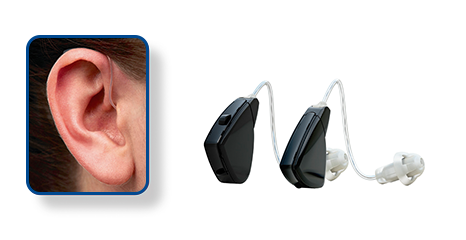
RITE models, also known as RIC (receiver-in-canal) models, are mini BTEs that have the speaker of the instrument incorporated in the ear tip, instead of in the main body of the instrument. RITE instruments fit mild to severe hearing losses. This hearing aid style looks similar to the Mini BTE when worn on the ear.
Hearing aids come in two basic styles: those that fit in the ear and those that sit behind the ear.
In-the-ear hearing aids require impressions of your ears for a customized fit and have the electronics built into the custom made shell. They range in size from the tiny completely-in-the-canal (CIC) which sits deeply in your ear canal, to the larger standard ITE which a full-shell that fills the entire bowl of the ear.
Behind-the-ear (BTE) aids have the electronics built into a small case that fits behind your ear and sends the sound to your ear canal by a tube or wire. Because the case doesn't have to fit inside your ear canal, BTE's generally have more features than ITE's and are easier to adjust.
A third style of hearing instruments, called a Remote Microphone (RM) hearing aid, is sometimes referred to as "the best of both worlds". The RM design is unique because the microphone is placed at the end of a flexible tube, which is then tucked securely in the outer portion of the ear. The rest of the instrument is inserted into the ear like a conventional CIC design. By combining the benefits of the behind-the-ear (BTE) and in-the-ear (ITE) styles, the RM offers a comfortable fit, is virtually invisible and offers maximum noise suppression.
Today's hearing aids come in a variety of sizes, styles and colors so you can choose one that best fits your hearing needs and you feel confident wearing.
Technology alone is not the key to improving your hearing. There are a number of other factors that you and your hearing healthcare professional should consider when selecting your device:
- Anatomy – the shape and size of the outer ear and ear canal may determine which type of hearing instrument you can wear.
- Your manual dexterity – some styles are easier to handle, insert and clean than others.
- Type and degree of hearing loss – individual variations in hearing loss can pose unique challenges and require different types of amplification.
- Your lifestyle – it's important to consider your favorite activities and the environment you spend most of your time in.
In general the larger the aid is the more power and features it will have, the easier it will be to insert and clean, and the longer its battery will last. Your hearing healthcare professional will work with you to find the style that best fits your lifestyle, budget and degree of hearing loss.
ReSound LiNX 3D the third generation of the LiNX family. The future of Smart Hearing is here. With ReSound LiNX 3D you will be able to do more and be more than you ever thought possible. Because it’s up to 50% better at identifying speech in various environments, you can hear up to 80% more of the sounds around you and understand up to 40%†† more speech in noise all while enjoying best-in-class streaming and control.